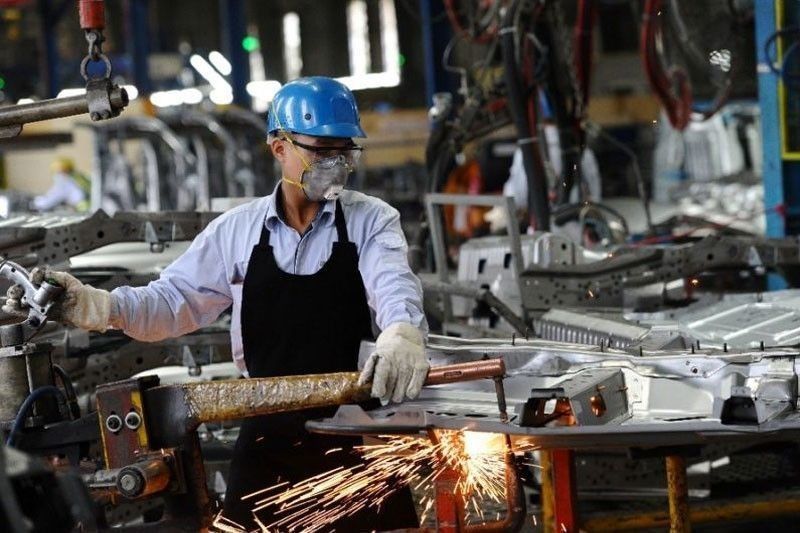Factories hike output in June

MANILA, Philippines — Manufacturing conditions in the country stabilized in June as manufacturers raised output for the first time since February, according to the latest IHS Markit Philippines Manufacturing Purchasing Managers’ Index (PMI).
The headline manufacturing PMI for the Philippines rose from 40.1 in May to 49.7 in June, just below the neutral 50 mark that separates expansion from contraction.
The latest reading was the highest since February and signals the movement toward stabilization of the domestic manufacturing sector.
The headline PMI provides a quick overview of the health of the manufacturing sector based on the weighted average of five indicators: new orders (30 percent weight), output (25 percent weight), job creation (20 percent), supplier delivery times (15 percent), and inventories (10 percent).
Filipino manufacturers expanded output levels for the first time since February as the relaxation of lockdown measures across much of the country allowed them to increase production, with many resuming operations for the first time in June since being shut down in mid-March.
New orders remained on the decline, although at a softer pace, leading to further sharp cuts in employment as well as in input purchasing and inventories.
IHS Markit said that while some firms increased employees to improve capacity, many chose to keep employment at minimal levels.
Nevertheless, firms were able to lower backlogs as demand remained weak.
On the price front, some firms increased selling prices slightly to offset the higher cost of inputs. Suppliers raised prices amid transport difficulties and higher freight charges.
Some companies, meanwhile, offered discounts in an effort to improve sales.
In June, more firms reported optimism for the year ahead as the government relaxes quarantine restrictions. Many firms cited hopes that this would help them regain customers and resume plans to develop new products.
“The change in government COVID-19 rules to the general community quarantine helped the manufacturing sector make large strides toward stability in June. Most importantly, production was raised for the first time since before the lockdown which, while marginal overall, marked a significant milestone in the reopening of the sector,” said David Owen, economist at IHS Markit.
“However, many firms did remain closed or operated at much lower capacity, suggesting that parts of the sector have some way to go to restore production to pre-pandemic levels. Demand also fell, although the rate of decline was far softer than in May. Firms have noticeably held back from hiring as a result of weak demand, as employment numbers dropped at the steepest rate since March.
Owen said manufacturers may need to see a strong rebound in demand before jobs can be increased.
“Signs from new orders and export orders data are encouraging, but the recovery may still be gradual as the pandemic continues and even accelerates in some regions,” he said.
Within the region, manufacturing conditions within ASEAN also deteriorated at a softer pace in June.
The headline ASEAN Manufacturing PMI rose to 43.7 in June from 35.5 in May even as all indicators remained on the decline last month.
Production and new orders fell further, although at a slower pace compared with May.
In line with weak demand, manufacturers across the region continued to reduce workers.
ASEAN goods producers also continued to pare down on purchasing, with buying activity falling markedly. Inventories of both pre- and post-production items also declined.
Supply chain disruptions continued, although the extent to which lead times lengthened was the least severe since February.
The 12-month outlook for the region improved further in June with business sentiment rising to a four-month high but remained subdued.
“Still, the sector has a way to go to recover from the COVID-19 pandemic. Although the rates of contraction in output and new orders have eased from the unprecedented drops in April and May as restrictions related to the virus have generally been loosened, ASEAN goods producers still face weak demand conditions at home and abroad,” said Lewis Cooper, economist at IHS Markit.
“Until there is a meaningful recovery in customer demand, it’s unlikely the sector will see any notable improvements in conditions in the months ahead.”
- Latest
- Trending






























